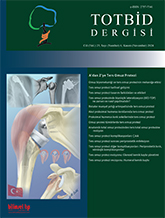
Glenoid bone loss is an important factor to keep in mind when primary reverse shoulder prosthesis is the issue, but if not well and thoroughly appraised in the revision reverse shoulder prosthesis, it may cause the treatment fail. The purpose of this review is to evaluate, classify and discuss the management strategies for glenoid bone loss in revision reverse shoulder prosthesis. Three-dimensional computed tomography imaging and pre-operative planning software are the major contributors to understanding, classification, and the concept of treatment planning for glenoid defects. These data can provide the preparation of a clear pre-operative plan for the best management strategy. In glenoid reconstruction, after the evaluation and classification of the glenoid bone loss and deformity of the glenoid, bone grafting techniques could be properly tailored for the selected appropriate patients. In cases when biological methods are not sufficient or in which there is critical bone loss, meal augments or patientspecific implants can be brought into play. Bone grafts, augmented glenoid components, or patient-specific implants demonstrate excellent correction of glenoid deformities caused by bone loss; however, more extended data are needed to clarify their long-term outcomes.